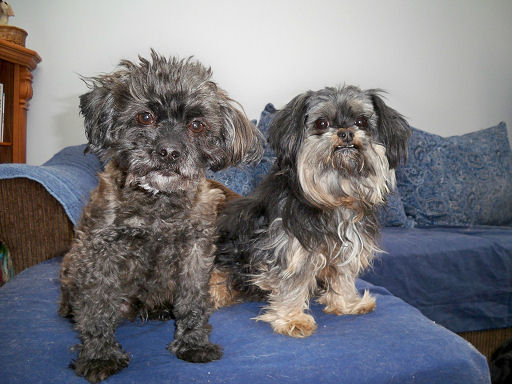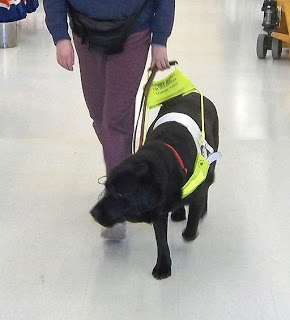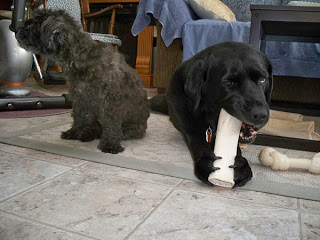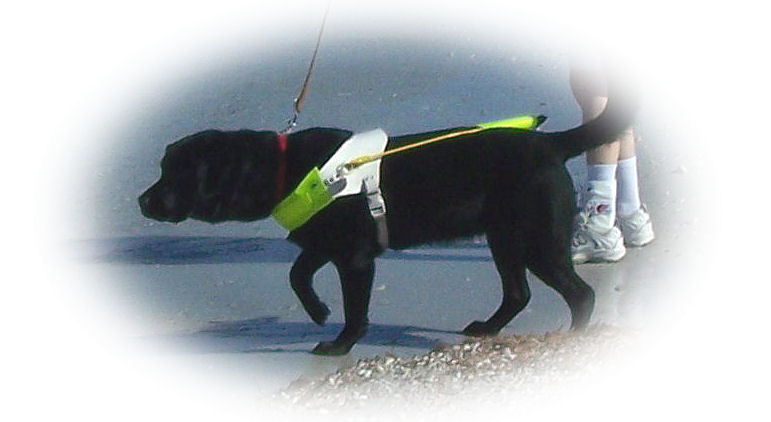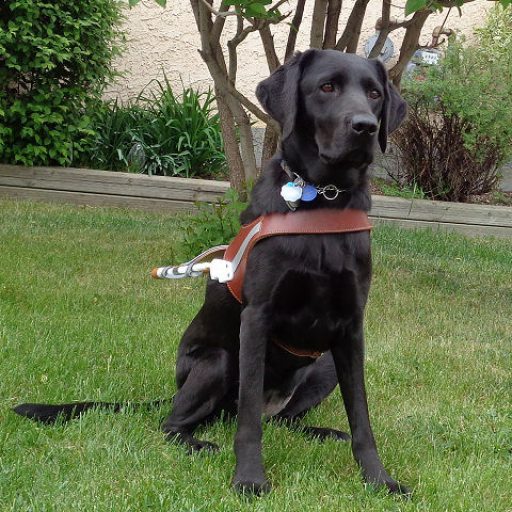What’s a service dog you ask? Well it’s a dog that has been professionally trained to provides a service like a Hearing Ear Dog alerts it’s handler to sounds that they don’t hear like a door bell or phone ring. Guide dogs are service dogs because they have been professionally trained to guide a blind or visually impaired handler.
What can I do when I come across a service dog?
The first thing is greet the handler, not the dog. The dog is quite busy doing it’s job and really shouldn’t be distracted by a petting, or coo’s and oos and awws thrown in thier direction. Distracting a service dog by reaching out for it while the dog is actively working can put the team at risk so focus on the handler.
A lot of people have a natural desire to pet a service dog. Each handler has their own way of handing this. The best thing to do is ask first. Some handlers will ask you to wait until they get the dog seated quietly before you can pet them. This way the dog is not having to focus on the handler and can focus on you for the petting. If however they handler says no not right now please don’t take it personally.
There are many reasons why a handler may say no. In my case it’s often when I am in a hurry and don’t have the time to properly spend for a petting session. Other time’s I will say no because the dog is being disciplined for something and I am trying to get the dog back on track by taking away a distraction. Sometimes dogs have bad days just liek we do and they themselves don’t like to be petted so it’s up to me to know this as the handler.
If people ask me first I am more likely to grant a petting session. If they don’t they are told quite bluntly that they are not to pet the dog while it’s working. I need to be blunt sadly because, often a no is not heard when it comes to the dog. If you touch the dog you are actually touching an extention of me and I will let you know it’s not welcome. Petting a guide dog or any oter service dog is not a right, it’s a privilege.
Sadly I have had some close calls due to people petting my guide dogs while they are actively working, even when we are on the move. One person felt it was ok to step in front of me while I was walking and my guide was guiding and reach down to pet her. Of course I ran into them. Guess who got in trouble. Me! for running into this person.
What should I do when I come across a guide dog team when I’m driving?
Treat the team like any other pedestrian.
One common thing I come across is drivers who wave me on. Think this through lol. You have a blind person at the street corner and you are waving them on. I”m not going to see the hand or any other gestures when being waved on. Honking is also fruitless or yelling through the window. I”m busy listening for traffic to flow so the horn will get ignored while I assess traffic.
Can Guide Dogs play with any other dogs?
Not while working or in harness. It’s a good idea to not bring your dog up to a guide dog while it’s working. My biggest pet peeve are the little dogs that get out of the house and start jumping all over my guide dog and the owner says ” aww isn’t that cute.. she really likes your dog”. Or bigger problem yet are puppies not on a leash doing the same thing and the owner has no clue that hte dog should be under control at all times like being on a leash.
This is serious business when dealing with other dogs. Dogs don’t always like each other and attacks are sadly common because the proper care isn’t taken to keep them apart while out in public. Three of my Five guide dogs have ben attacked by other dogs. I”m a little guarded around other dogs near my service dog. It’s not a laughing matter. Attacks are on the rise now with the introduction of fake service dogs out there who are not properly trained to deal with other dogs or to even do a job yet it’s inssited they be allowed where ever other service dogs are at. I”ll write more about this at a later date. It’s a heated topic with many sides to it.
In the mean time it’s wise to keep the dogs seperte when a service dog is actively working and they have thier working gear on.
